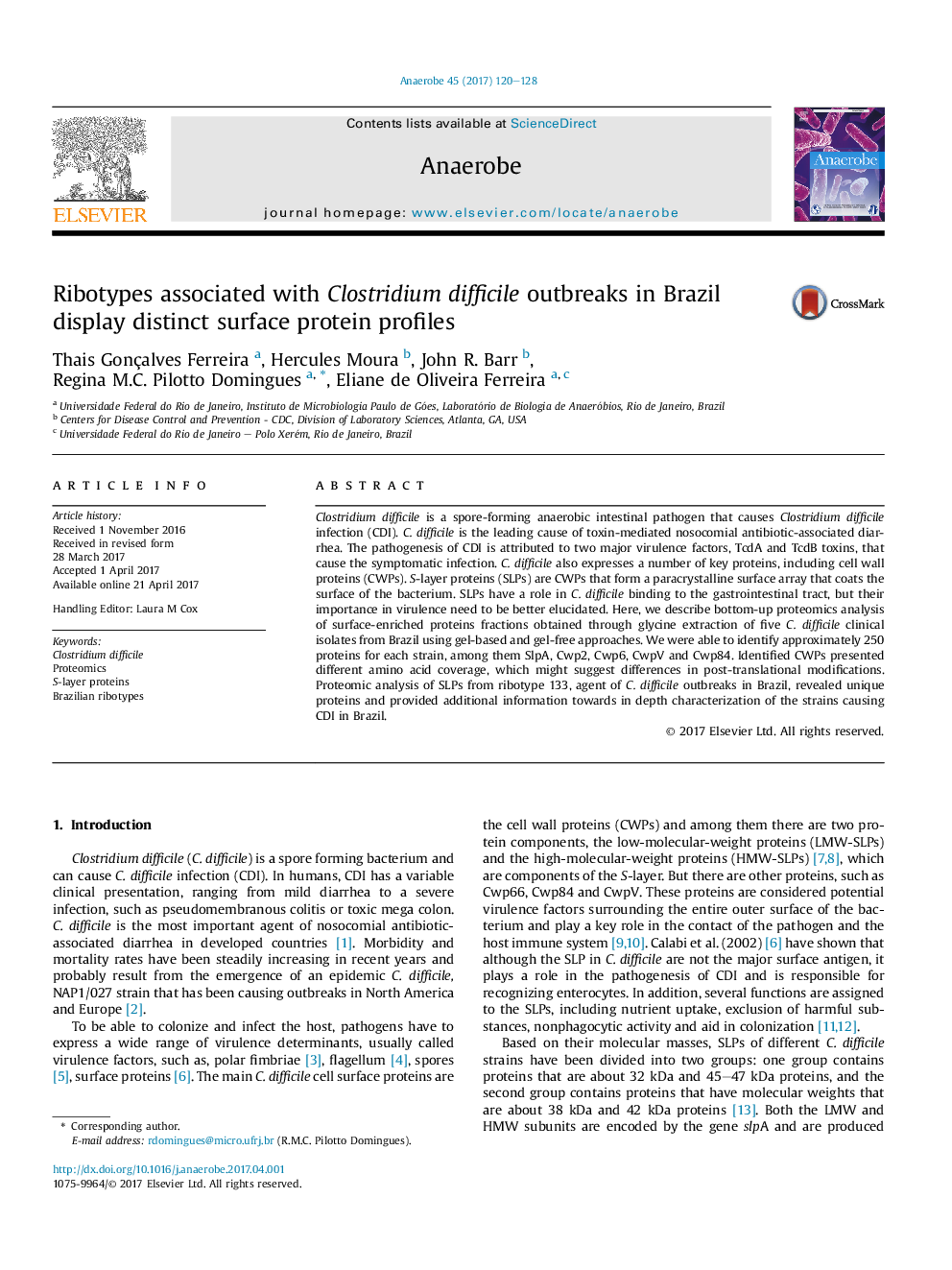| Article ID | Journal | Published Year | Pages | File Type |
|---|---|---|---|---|
| 5671387 | Anaerobe | 2017 | 9 Pages |
Clostridium difficile is a spore-forming anaerobic intestinal pathogen that causes Clostridium difficile infection (CDI). C. difficile is the leading cause of toxin-mediated nosocomial antibiotic-associated diarrhea. The pathogenesis of CDI is attributed to two major virulence factors, TcdA and TcdB toxins, that cause the symptomatic infection. C. difficile also expresses a number of key proteins, including cell wall proteins (CWPs). S-layer proteins (SLPs) are CWPs that form a paracrystalline surface array that coats the surface of the bacterium. SLPs have a role in C. difficile binding to the gastrointestinal tract, but their importance in virulence need to be better elucidated. Here, we describe bottom-up proteomics analysis of surface-enriched proteins fractions obtained through glycine extraction of five C. difficile clinical isolates from Brazil using gel-based and gel-free approaches. We were able to identify approximately 250 proteins for each strain, among them SlpA, Cwp2, Cwp6, CwpV and Cwp84. Identified CWPs presented different amino acid coverage, which might suggest differences in post-translational modifications. Proteomic analysis of SLPs from ribotype 133, agent of C. difficile outbreaks in Brazil, revealed unique proteins and provided additional information towards in depth characterization of the strains causing CDI in Brazil.
